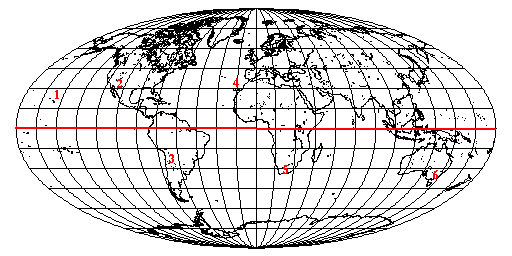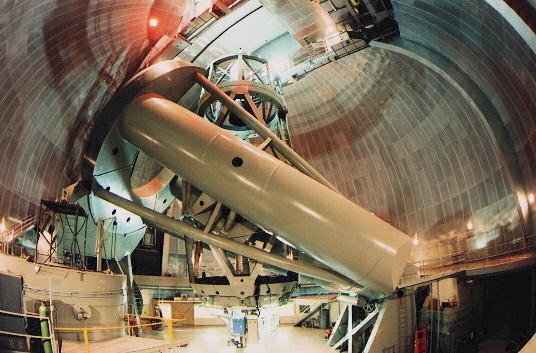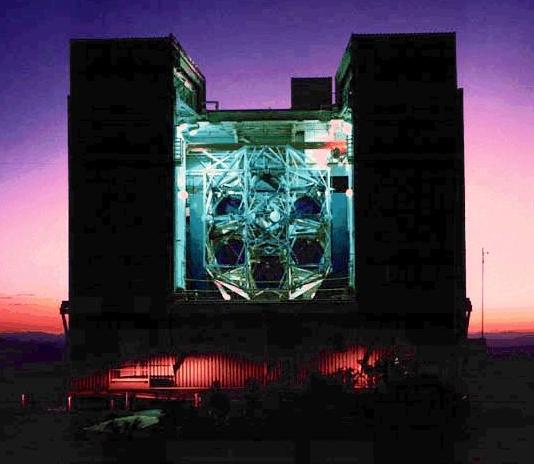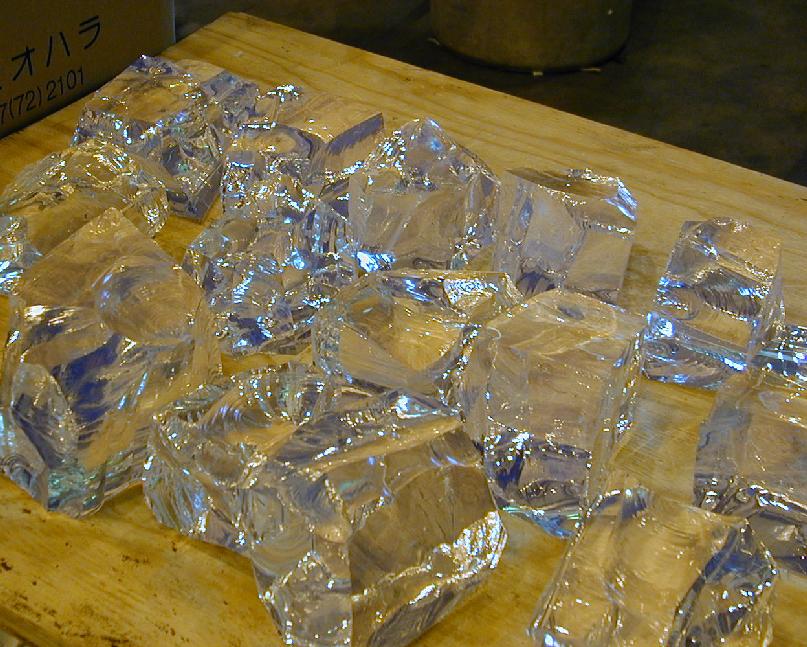
|
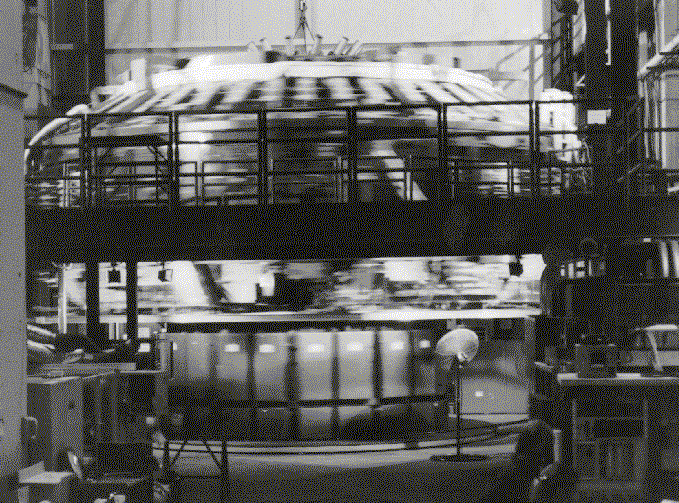
|
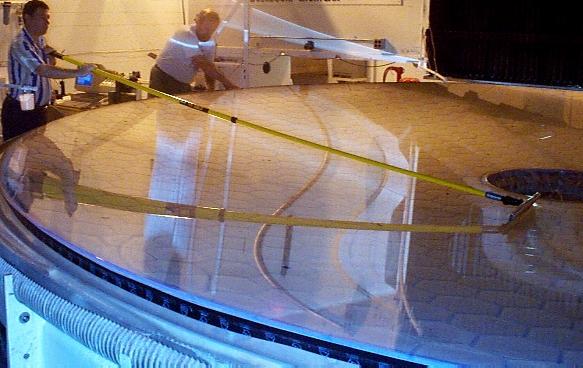
|
Large, chalk honeycomb-shaped pieces are arranged within an oven, which represent a large fraction of the volume. They add large chunks of high quality glass, slowly heating it. As the glass melts in the flat oven, they spin it (~7 RPM). As it cools, a concave surface forms. Once it's cooled (takes about 1-2 years) less glass must be removed for the final polish. When the polished surface is completed, the underlying chalk structure is removed using a high-pressure water hose.
